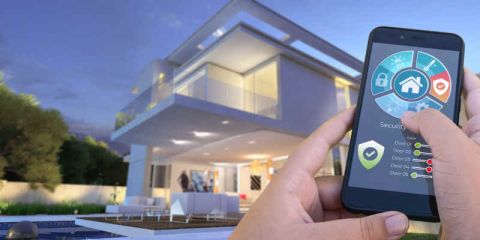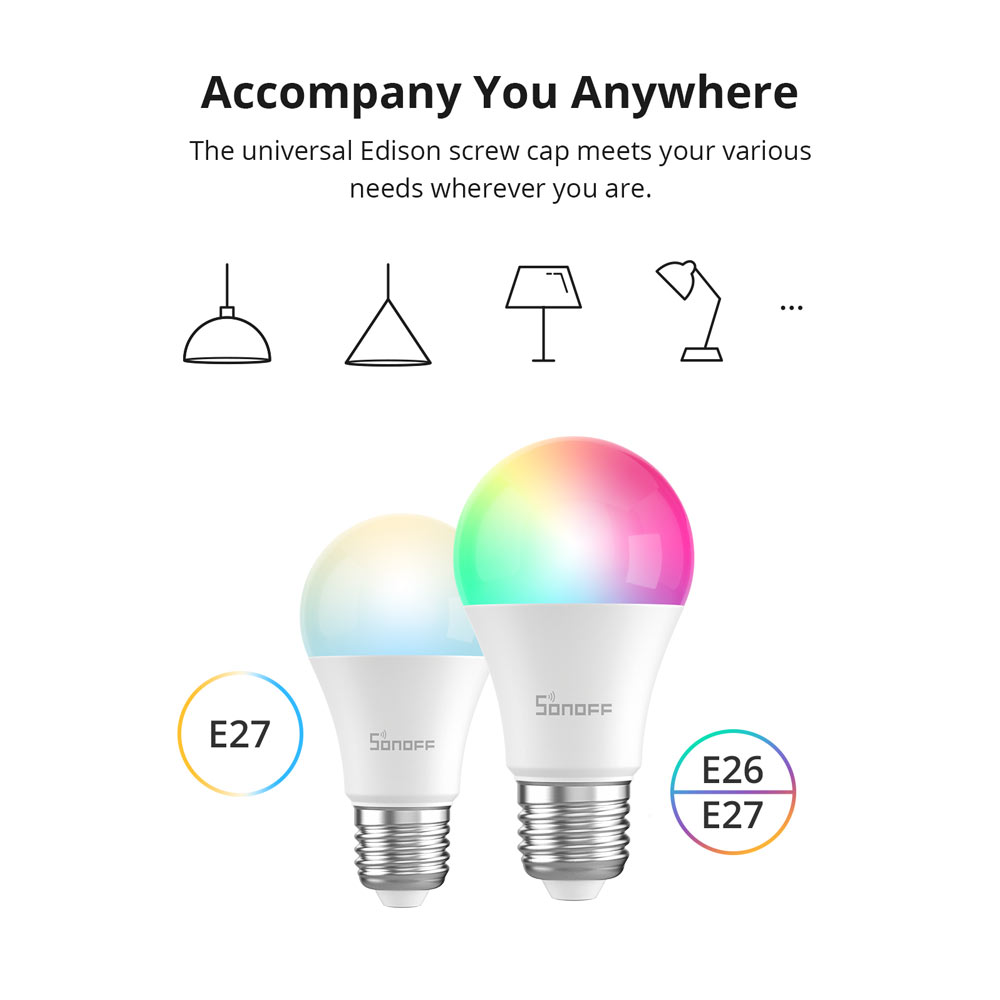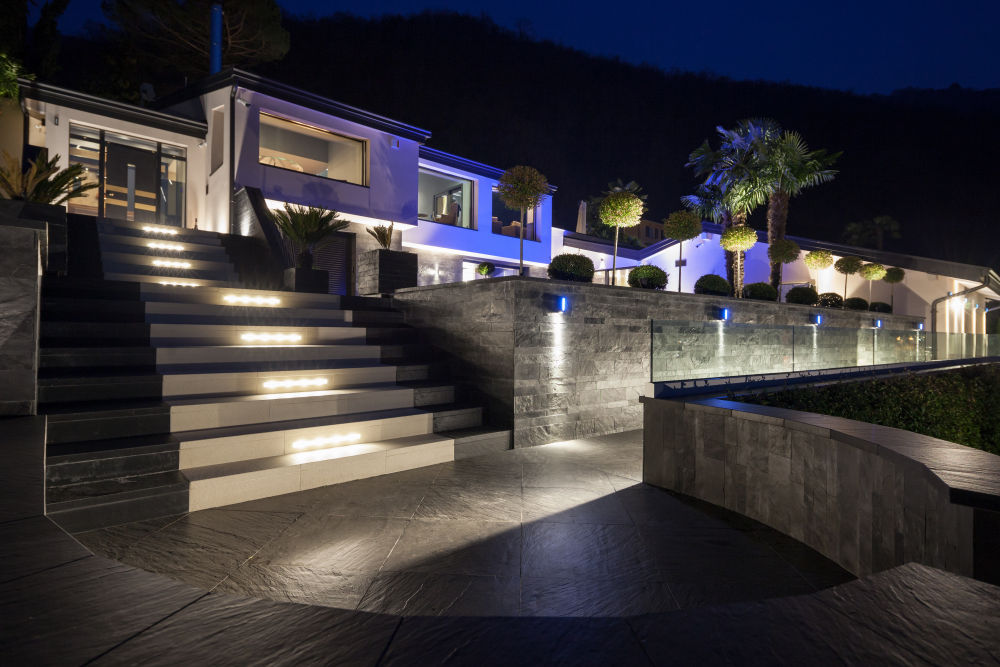 How to get a basic Smart Home
How to get a basic Smart Home
(As VIP you can start with only €55,-)
In this short guide I want to show you how easy and how little you need to get started with home automation. For benefits, advantages and options, please see previous posts on Facebook.
One of the most basic automations is turning on and off lights based on either schedules, motion (presence) or door sensors.
I will describe a setup, where the indoor or the outdoor entry lights are turned on only when needed. The same principles can be applied to the bathroom, kitchen or any other room or area. The purpose is to save electricity and increase comfort and security.
For this, I would use either the Smart bulbs B02-BL-A60 (adjustable warm/cold white) or B05-BL-A60 (adjustable colors), which both are dimmable.  You may want to use the LED light strips for special effects or if there is no 230V outlet or even in your car or camper as they run on 5-12 V. (note – For outdoor you should use the L2 or L3 as the L2 Lite is not suitable for outdoor). These lights are based on LED technology and use very little power (max 9,9 kWh per year) and has a life span of more than 15000 hours depending on usage. Without real automation, these lights can be operated by schedules or scenes directly from the app on your phone.
You may want to use the LED light strips for special effects or if there is no 230V outlet or even in your car or camper as they run on 5-12 V. (note – For outdoor you should use the L2 or L3 as the L2 Lite is not suitable for outdoor). These lights are based on LED technology and use very little power (max 9,9 kWh per year) and has a life span of more than 15000 hours depending on usage. Without real automation, these lights can be operated by schedules or scenes directly from the app on your phone.
Now to the automation! These lights do not need gateways or hubs if operated directly from the app on your phone but let´s automate them by adding a Hub and some “Triggers” (conditions turning on and off the lights to save even more electricity).
You will need a HUB or gateway to let different devices communicate. For a basic automation, I recommend the Sonoff ZBBridge (basic) which is sufficient and can manage up to 32 devices. It uses the Zigbee technology, which means great range (up to 80 m) and very low power consumption and can run on a coin cell battery for about two years and also because Zigbee (and Z-wave) devices often can be controlled even without Internet. This gateway will be the communication link between sensors and other triggers (running Zigbee).
Obviously you want to add a trigger and a schedule to impress your friends😊 (the trigger can activate multiple lights and devices simultanously).
For the entry, which I am using as an example, I would add both a wireless motion sensor and a wireless door sensor.  The motion sensor will trigger (activate) the outdoor lights and the door sensor the indoor lights You could replace the door sensor with a motion sensor, if you want the lights on every time you walk to the front door). The SNZB-03 is an inexpensive, very small and reliable motion sensor and the SNZB-04 is the recommended door sensor. From the app you can now create the following scenes:
The motion sensor will trigger (activate) the outdoor lights and the door sensor the indoor lights You could replace the door sensor with a motion sensor, if you want the lights on every time you walk to the front door). The SNZB-03 is an inexpensive, very small and reliable motion sensor and the SNZB-04 is the recommended door sensor. From the app you can now create the following scenes:
Scene 1: If motion detected, turn on outdoor light
Scene 2: Disable Scene 1 between sunrise and sunset (no need to turn on lights during the daytime
Scene 3: If Door sensor is opened, turn on indoor lights
Scene 4: Disable Scene 3 between sunrise and sunset
Now to turn off the lights again, go to the settings for the lights and set the Inching to i.e. 5 minutes, create a scene the turns off the indoor lights when the door is closed (set a delay) and/or set the motion trigger to turn off the outdoor lights if no movement.
As trigger you can also use GeoTracking from your phone to turn lights on when you are nearby or NFC tags to turn on lights when you hold your phone close to the tag or you can add a Voice Assistant like Siri, Google Home or Alexa to tell your automated home what to do.
This is all and you have now automated an often used routine to increase comfort, save electricity (and impress friends). Check out our guides and products and get inspired for more home automations.
And don’t forget – If you get lost during setup, call or message me, and I will guide you through it. If you prefer, I can even setup scenes and other configurations remotely without having access to your computer. In Málaga and Marbella, you can even have everything installed by our technician so all you have to do is start enjoying your savings and comfort😊




